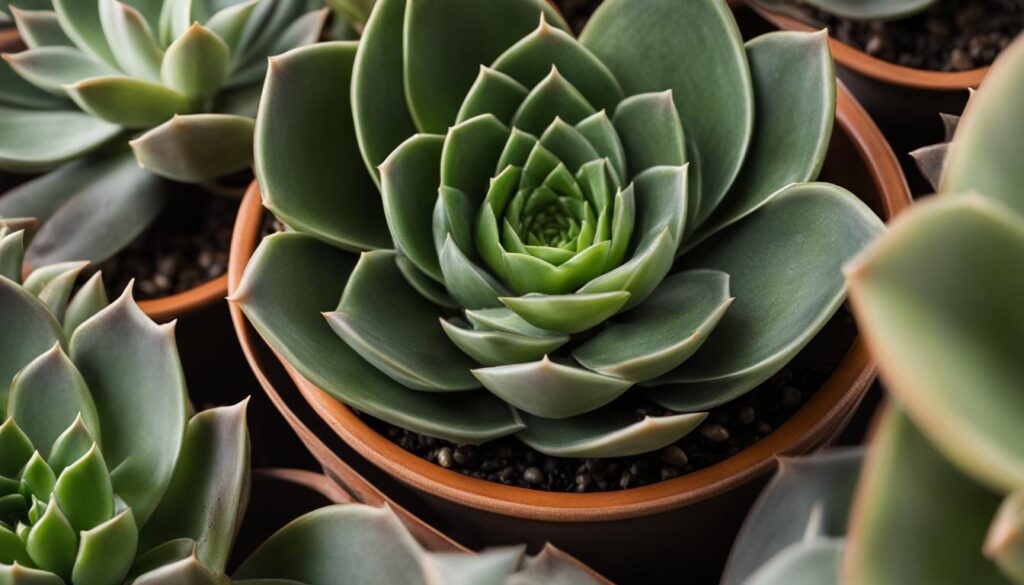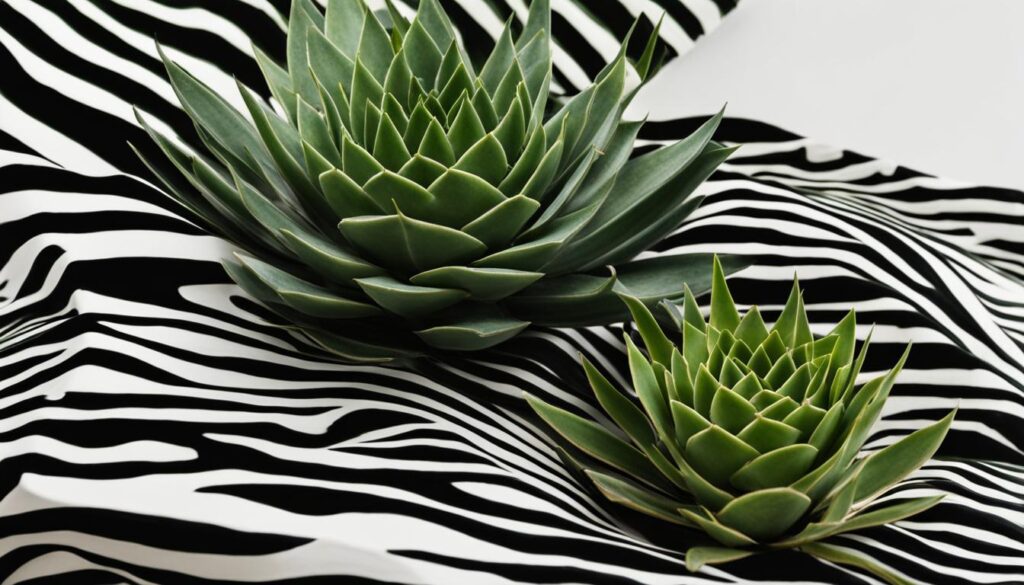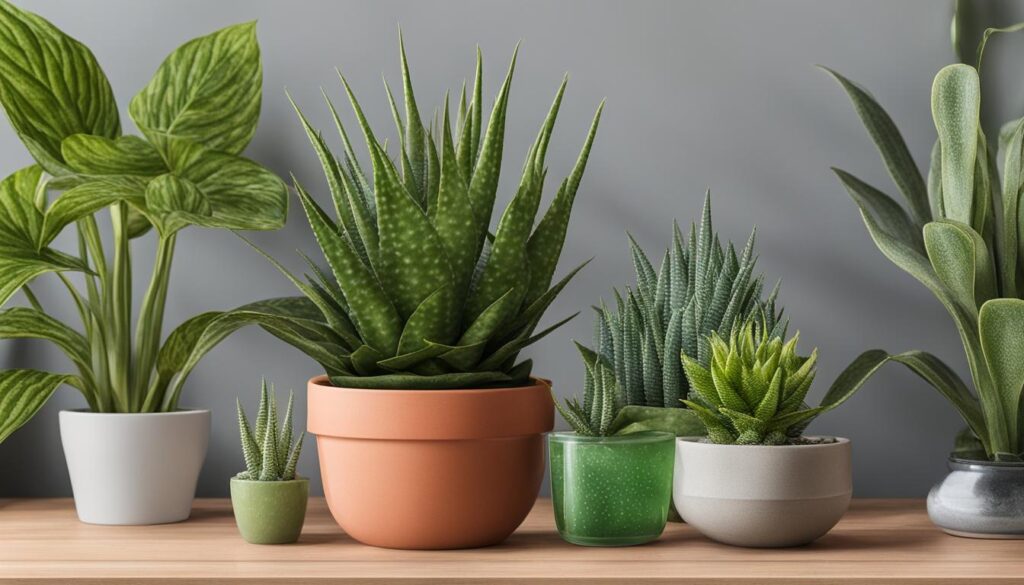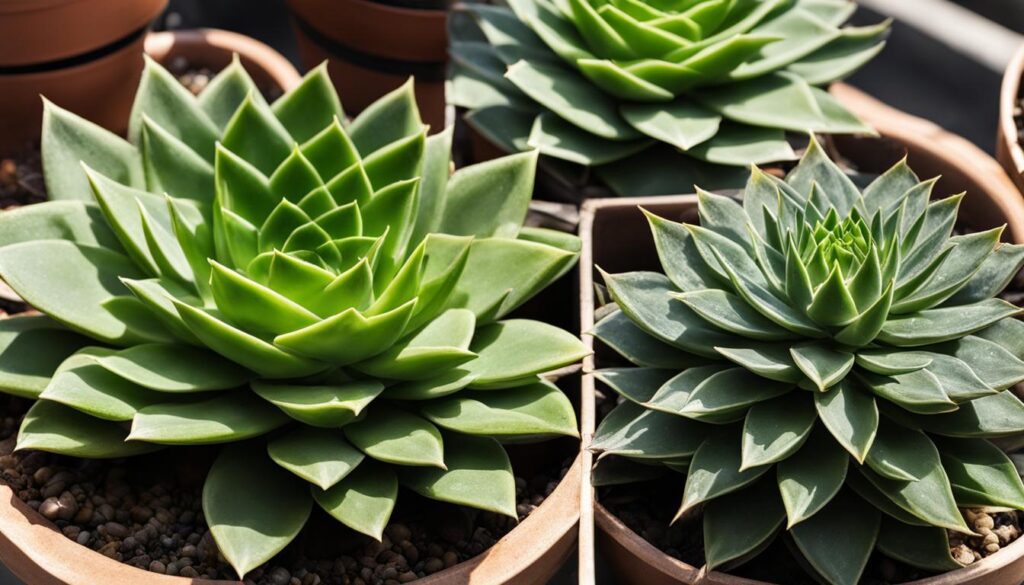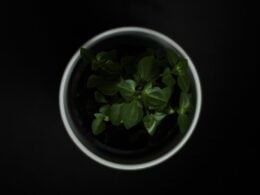Welcome to our guide comparing Haworthia Fasciata and Haworthia Attenuata, two popular succulent plants native to South Africa. Both species share some similarities, but they also have distinct differences that set them apart. If you’re a succulent lover or looking to add some unique plants to your collection, read on to discover the key characteristics and care considerations for these fascinating plants.
Post Summary
- Haworthia Fasciata and Haworthia Attenuata are succulent plants native to South Africa.
- They share similarities in their growth habits and care requirements.
- The main difference between the two species lies in their leaf characteristics and growth rates.
- Haworthia Fasciata has smoother inner leaves and a slower growth rate.
- Haworthia Attenuata displays tubercles on both sides of the leaves and has a faster growth rate.
Native Habitat and Growing Conditions
Haworthia Fasciata and Haworthia Attenuata are succulent plants that are native to South Africa and are well-adapted to a sub-tropical habitat. These plants thrive in areas with plenty of sunlight and are able to withstand periods of limited rainfall. Their succulent nature allows them to store water within their thick leaves, which is essential for survival in their natural environment. When growing these plants, it is important to provide them with well-drained soil and ensure they receive ample sunlight.
Both Haworthia Fasciata and Haworthia Attenuata can be grown in both indoor and outdoor settings. If you choose to grow them indoors, make sure they are placed in a location where they can receive sufficient sunlight. Outdoors, these plants can tolerate a wide range of temperatures but ideally should be kept between 65°F-80°F. They do best in areas with low humidity and should not be overwatered, as this can lead to root rot.
Overall, Haworthia Fasciata and Haworthia Attenuata are relatively easy to care for, as long as their basic needs are met. With the right growing conditions, these plants can thrive and add a touch of natural beauty to any space.
| Growing Conditions | Haworthia Fasciata | Haworthia Attenuata |
|---|---|---|
| Native Habitat | South Africa | South Africa |
| Sun Exposure | Plenty of sunlight | Plenty of sunlight |
| Water Storage | Store water in thick leaves | Store water in thick leaves |
| Rainfall | Can withstand limited rainfall | Can withstand limited rainfall |
Plant Characteristics
Haworthia Fasciata and Haworthia Attenuata both exhibit unique plant characteristics that make them visually appealing and distinct. These succulents form rosettes of thick leaves, which give them a compact and organized look. The leaves of both species feature intriguing patterns, resembling Zebra-like stripes or tubercles. Haworthia Fasciata showcases smoother inner leaves, while Haworthia Attenuata displays tubercles on both the inner and outer sides of the leaves.
The foliage of these plants is a prominent feature that adds to their overall charm. The leaves of Haworthia Fasciata have a fibrous structure, which contributes to their fatter appearance. On the other hand, Haworthia Attenuata has slightly longer leaves without the fibrous texture. Both species can produce small tubular flowers from an inflorescence, although flowering is less common when these succulents are grown indoors.
With their rosette formation, Zebra-like stripes or tubercles, and unique inflorescence, Haworthia Fasciata and Haworthia Attenuata are truly captivating plants that add beauty to any collection or garden.
A Comparison of Plant Characteristics
| Haworthia Fasciata | Haworthia Attenuata | |
|---|---|---|
| Rosette Formation | Yes | Yes |
| Zebra-like Stripes or Tubercles | Zebra-like stripes on leaves | Zebra-like stripes on leaves and tubercles on both sides of leaves |
| Leaf Characteristics | Smoother inner leaves, fibrous structure | Tubercles on inner and outer sides of leaves, lacks fibrous structure |
| Inflorescence | Produces small tubular flowers | Produces small tubular flowers |
Table: A comparison of the plant characteristics of Haworthia Fasciata and Haworthia Attenuata.
Origin and Names
Haworthia Fasciata and Haworthia Attenuata are succulent plants that originate from South Africa. They are commonly known as Zebra Haworthia or Zebra Cactus due to their distinctive striped foliage. The botanical names for these plants are Haworthia Fasciata and Haworthia Attenuata, respectively.
These plants have gained popularity worldwide due to their unique appearance and easy care requirements. The name “Zebra Haworthia” perfectly captures the striking resemblance of their patterned leaves to the stripes of a zebra. The name “Zebra Cactus” is often used interchangeably, emphasizing their succulent nature and cactus-like growth habits.
| Haworthia Fasciata | Haworthia Attenuata |
|---|---|
| Smooth inner leaves | Tubercles on both inner and outer sides of leaves |
| Rare and fatter leaves | Common and slender leaves |
Regardless of the name used, these plants are beloved by succulent enthusiasts and collectors for their beauty and adaptability. They make stunning additions to both indoor and outdoor spaces, adding a touch of natural elegance and uniqueness.
Growth and Size
Haworthia Fasciata and Haworthia Attenuata are small succulent plants that can reach a height of 4-8 inches. With a rosette formation, the diameter of these plants can reach up to 5 inches. Both species have clump-forming growth habits, making them ideal for container gardening. When choosing a pot for these succulents, consider a size that allows enough space for growth while still providing a snug fit. A pot with a diameter of around 5 inches is suitable for their growth.
It is important to note that Haworthia Fasciata generally has a slower growth rate compared to Haworthia Attenuata. This difference in growth rate can affect the overall size and appearance of the plants over time. If you prefer a more compact and slower-growing plant, Haworthia Fasciata may be the better choice. On the other hand, if you prefer a slightly larger plant with faster growth, Haworthia Attenuata can be a great option.
When properly cared for, both Haworthia Fasciata and Haworthia Attenuata can thrive and maintain their compact size, making them suitable for small spaces and indoor environments.
Growth Comparison:
| Haworthia Fasciata | Haworthia Attenuata | |
|---|---|---|
| Growth Rate | Slow | Faster |
| Height | 4-8 inches | 4-8 inches |
| Diameter | Up to 5 inches | Up to 5 inches |
| Clump Forming | Yes | Yes |
| Pot Size | 5 inches+ | 5 inches+ |
Pet Safety and Care
When it comes to pet safety, both Haworthia Fasciata and Haworthia Attenuata are non-toxic to cats and dogs. This makes them excellent choices for households with furry friends. However, it is always important to monitor your pets and ensure they do not ingest any part of the plants.
For optimal growth, these succulents require an optimal temperature range of 65°F-80°F. It is best to place them in areas with plenty of sunlight or bright light. South-facing windows are ideal for providing the necessary light exposure. Remember to rotate the plants regularly to ensure even growth.
In terms of watering, it is crucial to strike the right balance. During the growing season, which is typically from spring to fall, water the plants thoroughly and allow the soil to dry out between waterings. In winter, reduce watering and let the topsoil dry out before watering again. The leaves of these succulents store water, so be cautious not to overwater.
When it comes to the care of Haworthia Fasciata and Haworthia Attenuata, providing them with the right environmental conditions and proper watering will ensure their health and longevity. Keep these factors in mind, and both you and your pets can enjoy the beauty of these non-toxic and fascinating succulents.
Propagation and Repotting
Propagating Haworthia Fasciata and Haworthia Attenuata is relatively straightforward and can be done through leaf cuttings or by removing offsets (pups) from the mother plant. To propagate using leaf cuttings, choose a healthy leaf and remove it from the plant with a clean, sharp knife or scissors. Let the leaf cutting dry out for a few days in a shaded area to allow the wound to callus over. Once calloused, plant the leaf cutting in well-drained soil, burying the base of the leaf slightly. Water once, then monitor for signs of new growth.
Offsets can also be used for propagation. Gently remove the offsets from the base of the mother plant using a clean, sharp knife or your hands. Allow the offsets to dry out for a few days, similar to the leaf cuttings, before planting them in well-drained soil. Ensure that the offset is buried deep enough to provide stability, but not too deep to prevent rot. Water once and monitor for new growth.
When it comes to repotting, it is recommended to repot Haworthia Fasciata and Haworthia Attenuata every two years, or when the plant has outgrown its current container. Choose a slightly larger pot with drainage holes to prevent waterlogged soil. Use a cactus potting mix or create a mix of potting soil, perlite, and sand for proper drainage. When repotting, gently remove the plant from its current container, taking care not to damage the roots. Place the plant in the new pot, ensuring that it is centered and at the appropriate depth. Fill the gaps with fresh potting mix and gently tamp it down. Water lightly after repotting and gradually resume normal watering.
| Propagation Methods | Leaf Cuttings | Offsets |
|---|---|---|
| Instructions | 1. Choose a healthy leaf and remove it from the plant. 2. Let the leaf cutting dry out for a few days. 3. Plant the leaf cutting in well-drained soil. 4. Water once and monitor for new growth. |
1. Gently remove offsets from the mother plant. 2. Allow the offsets to dry out for a few days. 3. Plant the offsets in well-drained soil. 4. Water once and monitor for new growth. |
Light and Humidity Requirements
When it comes to light and humidity, Haworthia Fasciata and Haworthia Attenuata have specific preferences. These succulent plants thrive in bright light and can be placed in areas with direct sun exposure, such as south-facing windows. East or west-facing windows can also provide suitable light intensity for their growth. It is important to note that these plants can tolerate normal room humidity and do not require additional measures to increase humidity.
If you choose to place your Haworthia plants in south-facing windows, they will receive plenty of sunlight throughout the day. However, it is essential to avoid exposing them to prolonged periods of intense sunlight, as it can cause leaf scorch. If your windows do not receive enough natural light, you can supplement it with artificial grow lights to ensure their proper growth and development.
As for humidity, Haworthia Fasciata and Haworthia Attenuata can thrive under normal room humidity levels. This means that there is no need for special misting or humidifiers to create a humid environment for these plants. They are adapted to survive in arid conditions and have mechanisms to store water within their leaves. Therefore, they can withstand lower humidity levels without any issues.
Quick Tips for Light and Humidity
- Place your Haworthia plants in bright, indirect light or direct sunlight for a few hours each day.
- South-facing windows provide the best light exposure, but east or west-facing windows are also suitable.
- Avoid exposing the plants to prolonged periods of intense sunlight to prevent leaf scorch.
- Keep the plants in areas with normal room humidity; no additional measures are required to increase humidity.
“Haworthia Fasciata and Haworthia Attenuata can thrive in bright light and normal room humidity. They are adaptable plants that can survive in a variety of light conditions and do not require additional humidity treatments.”
Now that you know the light and humidity requirements for Haworthia Fasciata and Haworthia Attenuata, you can confidently provide them with the optimal growing conditions. Whether you place them in a sunny window or provide them with artificial grow lights, these succulent plants will flourish and add a touch of natural beauty to your indoor spaces.
| Aspect | Light | Humidity |
|---|---|---|
| Sun Exposure | Direct sunlight or bright light | Normal room humidity |
| Ideal Placement | South-facing windows provide the best light exposure, but east or west-facing windows are also suitable | Normal room humidity; no additional measures required |
| Special Considerations | Avoid prolonged intense sunlight to prevent leaf scorch | No additional humidity treatments necessary |
Fertilizing and Winter Care
Proper fertilization and winter care are crucial for the health and well-being of Haworthia Fasciata and Haworthia Attenuata. Understanding the right feeding schedule, winter water reduction, and sensitivity to cold temperatures will help you provide the best care for these succulents.
Fertilizing Schedule
During the active growing season, which typically runs from April to September, you can fertilize your Haworthia plants once a month. Use a diluted liquid fertilizer specifically formulated for succulents. Follow the package instructions for the appropriate dilution ratio. Over-fertilizing can be harmful, so it’s important not to exceed the recommended feeding schedule.
Winter Water Reduction
During the winter months, it is essential to reduce watering for Haworthia Fasciata and Haworthia Attenuata. As the plants enter a period of dormancy, their water requirements decrease significantly. Overwatering during this time can lead to root rot and other issues. Allow the topsoil to dry out between waterings, and only water when the soil is completely dry. It is better to underwater than to overwater during winter.
Cold Temperature Sensitivity
Haworthia plants are sensitive to cold temperatures and drafts. Avoid placing them in areas with extreme cold or near doors and windows that may experience drafts. Cold temperatures can damage the leaves and cause discoloration or even plant death. It is recommended to keep these succulents in environments with temperatures between 65°F-80°F. If the temperature drops below 50°F, provide additional protection, such as moving the plants indoors or covering them during frosty nights.
| Fertilizing and Winter Care | Haworthia Fasciata | Haworthia Attenuata |
|---|---|---|
| Fertilizing Schedule | Once a month during the active growing season (April to September) | Once a month during the active growing season (April to September) |
| Winter Water Reduction | Allow topsoil to dry out between waterings; water sparingly | Allow topsoil to dry out between waterings; water sparingly |
| Cold Temperature Sensitivity | Sensitive to cold temperatures; protect from frost and drafts | Sensitive to cold temperatures; protect from frost and drafts |
Soil Requirements
When it comes to cultivating healthy and thriving Haworthia Fasciata and Haworthia Attenuata, choosing the right soil is crucial. These succulents thrive in well-drained soil that allows excess moisture to escape easily. A cactus potting mix is an excellent choice as it is specifically formulated to provide the ideal conditions for succulent plants. It is designed to have enhanced drainage properties while still retaining enough moisture for the plants’ roots.
For those who prefer to create their own soil mix, a combination of potting soil, perlite, and sand can be used. This mixture helps improve the soil’s drainage and aeration, preventing waterlogged conditions that can lead to root rot. Additionally, it is important to consider the pH levels and soil acidity to provide the best environment for these plants.
Haworthia Fasciata tends to prefer slightly acidic soil, with a pH level around 6 or slightly less. On the other hand, Haworthia Attenuata thrives in neutral soil, with a pH level around 7. Monitoring and adjusting the soil’s pH levels can be done using a soil pH testing kit, allowing you to provide the optimal conditions for these fascinating succulents.
Soil Requirements Summary:
- Choose well-drained soil to prevent waterlogged conditions.
- A cactus potting mix is an excellent option for these succulents.
- If creating your own soil mix, use a combination of potting soil, perlite, and sand.
- Haworthia Fasciata prefers slightly acidic soil with a pH level around 6.
- Haworthia Attenuata thrives in neutral soil with a pH level around 7.
- Monitor and adjust the soil’s pH levels to provide optimal growing conditions.
Key Differences and Varieties
When comparing Haworthia Fasciata and Haworthia Attenuata, it becomes evident that there are distinct differences in their leaf characteristics and growth habits. Haworthia Fasciata, also known as the Zebra haworthia, has smoother inner leaves and a fibrous structure. Its leaves are slightly shorter, and it has a slower growth rate compared to Haworthia Attenuata. On the other hand, Haworthia Attenuata displays tubercles on both the inner and outer sides of the leaves, lacks a fibrous structure, has longer leaves, and exhibits a faster growth rate.
In addition to these key differences, there are also various forms and varieties within Haworthia Attenuata that offer collectors a wide range of options. Some notable forms include var. radula, which has distinctive tubercles and patterns, as well as variegated forms that display unique color variations. Another interesting variety is f. tanba, which features elongated leaves and an attractive appearance.
These differences in leaf characteristics and growth habits make each species and variety of Haworthia unique and appealing to succulent enthusiasts. Whether you prefer the smoother leaves and slower growth of Haworthia Fasciata or the tubercles and faster growth of Haworthia Attenuata, there is a variety that will suit your preferences and add beauty to your collection.
Comparative Summary of Haworthia Fasciata and Haworthia Attenuata
| Characteristic | Haworthia Fasciata | Haworthia Attenuata |
|---|---|---|
| Leaf Appearance | Smoother inner leaves | Tubercles on both inner and outer sides of leaves |
| Growth Rate | Slower | Faster |
| Fibrous Structure | Present | Absent |
| Leaf Length | Slightly shorter | Longer |
| Varieties | N/A | Var. radula, variegated forms, f. tanba |
As shown in the table, Haworthia Fasciata and Haworthia Attenuata have distinct characteristics that set them apart. The choice between these two species and their varieties ultimately comes down to personal preference and desired aesthetic in your succulent collection. Whether you appreciate the smooth leaves and slower growth of Haworthia Fasciata or the tubercles and faster growth of Haworthia Attenuata, both will make beautiful additions to your indoor or outdoor space.
Conclusion
In summary, when choosing the right plant for your home or garden, both Haworthia Fasciata and Haworthia Attenuata are excellent choices. These beautiful succulent plants, native to South Africa, share similarities in their growth habits and care requirements. They are both clump-forming succulents that can thrive in a variety of settings, from gardens to greenhouses and even indoors.
However, it’s important to consider the differences between these two species. Haworthia Fasciata, also known as Zebra Haworthia, has smooth inner leaves and a slower growth rate. It also tends to be rarer and has fatter leaves. On the other hand, Haworthia Attenuata, also called Zebra Cactus, displays tubercles on both sides of the leaves, has longer leaves, and a faster growth rate. These differences in leaf appearance and growth rate can help you make an informed decision based on your preferences.
When it comes to care considerations, both plants require similar conditions. They thrive in bright light and well-drained soil, such as a cactus potting mix. Adequate sunlight, proper watering, and occasional feeding during the growing season are essential for their health. Additionally, it’s worth noting that these plants are non-toxic to cats and dogs, making them safe to have in homes with pets.
In conclusion, whether you choose Haworthia Fasciata or Haworthia Attenuata, both plants can be easily cared for and will add beauty to your indoor or outdoor space. Consider their unique leaf characteristics and growth rates to find the perfect fit for your preferences. With proper care, these succulents will thrive and bring joy to any plant lover.
What Are the Key Differences Between Haworthia Fasciata and Attenuata?
When comparing the echeveria vs aeonium differences, it’s important to note that Haworthia Fasciata and Attenuata are two distinct species within the same genus. The key differences lie in their appearance, as Fasciata has smooth, flat-topped leaves with bumpy white tubercles, while Attenuata has more elongated, pointed leaves without tubercles.
FAQ
What are the main differences between Haworthia Fasciata and Haworthia Attenuata?
Haworthia Fasciata has smoother inner leaves, while Haworthia Attenuata displays tubercles on both sides of the leaves. Haworthia Fasciata also has a slower growth rate compared to Haworthia Attenuata.
Are Haworthia Fasciata and Haworthia Attenuata safe for pets?
Yes, both plants are non-toxic to cats and dogs.
What are the ideal growing conditions for Haworthia Fasciata and Haworthia Attenuata?
These plants thrive in temperatures ranging from 65°F-80°F and require ample sunlight. They should be placed in well-drained soil and watered appropriately.
How can I propagate Haworthia Fasciata and Haworthia Attenuata?
These plants can be propagated using leaf cuttings or by removing offsets (pups) from the mother plant.
How often should I water these succulents?
It is important to water these succulents thoroughly during the growing season, allowing the soil to dry out between waterings. During winter, watering should be reduced, and the topsoil should be allowed to dry out.
What type of soil should I use for Haworthia Fasciata and Haworthia Attenuata?
A well-draining cactus potting mix is recommended. If using a homemade mix, a combination of potting soil, perlite, and sand can be used. Haworthia Fasciata prefers acidic soil, while Haworthia Attenuata thrives in neutral soil.
How often should I fertilize these plants?
From April to September, these plants can be fed with a diluted liquid fertilizer once a month. It is important to avoid fertilizing during winter months.
Can these plants be grown indoors?
Yes, Haworthia Fasciata and Haworthia Attenuata can be grown indoors as long as they receive ample sunlight or bright light.
What are the key differences between Haworthia Fasciata and Haworthia Attenuata?
The main differences lie in their leaf characteristics and growth habits. Haworthia Fasciata has smoother inner leaves, a fibrous structure, slightly shorter leaves, and a slower growth rate. Haworthia Attenuata has tubercles on both sides of the leaves, lacks fibrous structure, has longer leaves, and a faster growth rate.
What is the optimal temperature for these plants?
These plants thrive in temperatures ranging from 65°F-80°F.
How should I care for these plants during winter?
During winter, these plants should be watered less frequently to prevent overwatering, especially in combination with cold temperatures or drafts. The leaves of these succulents serve as water storage organs, so watering should be reduced during winter.






